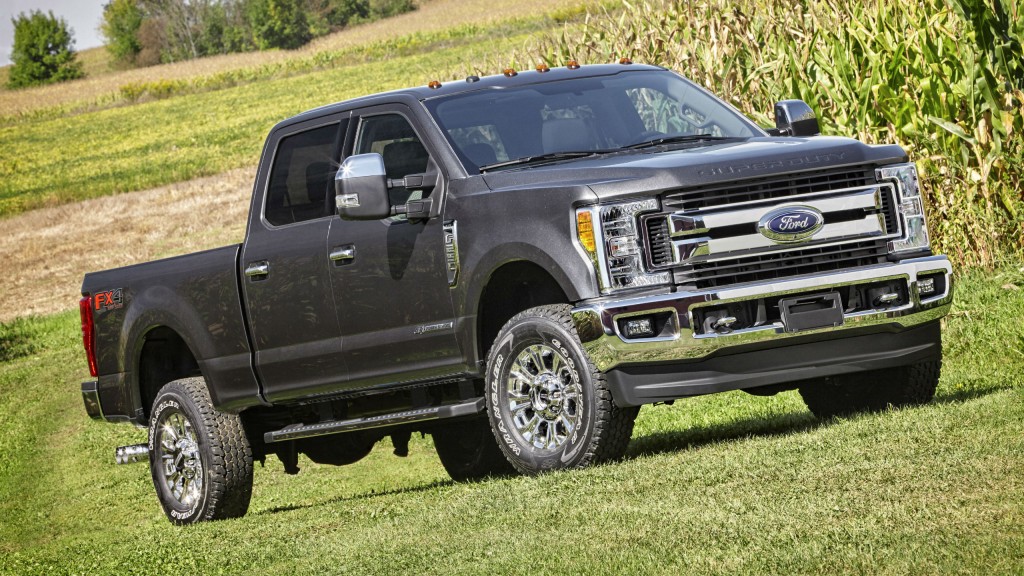
Redesigns of truck lines don’t happen every year, but when they do, it’s a chance for the manufacturer to take the most up-to-date technology and concepts available to produce the best truck for their customers’ needs.
For 2017, that’s exactly what Ford did with its F-Series Super Duty truck line. The company looked at the needs of its customers, both individual and fleet management, and took advantage of technological advances to produce a new F-Series truck line with a range of features to meet the requirements of a wide variety of pickup users.
That effort hasn’t gone unnoticed – the F-Series Super Duty was recognized with the prestigious Truck of the Year award from Motor Trend. That speaks to the effort that has gone into understanding the market and producing a truck that is tough, effective and well built.
“When you look at the new Super Duty trucks and go through the features, that’s not stuff where we were sitting around going ‘Wouldn’t it be cool if we did…’ That’s all stuff that we’ve come up with through focus groups and especially through our fleet managers,” related Michael McGarrell, truck communications manager with Ford.
Ford started its Super Duty redesign from the ground up to create the 2017 models. The frame is an all-new fully boxed design that contains more than 95 percent high-strength steel which Ford says is up to 24 times stiffer than the previous frame, enabling impressive towing and hauling capabilities. At the same time, the body has been built from a new high-strength military-grade aluminum alloy, allowing the manufacturer to reduce the truck’s weight by nearly 350 pounds. The weight savings were reinvested into more robust components to improve towing and hauling even more.
The F-450 SuperCrew 4x4 truck now features maximum gooseneck towing of 32,500 pounds. Maximum fifth-wheel towing increases to 27,500 pounds. Gross combined weight rating for F-450 Super Duty is a class-leading 41,800 pounds. Maximum conventional towing increases to 21,000 pounds – 1,000 pounds better than the nearest competitor without the need for a weight-distributing hitch, Ford states. Maximum conventional towing for the F-250 with an all-new trailer tow package and for the single-rear-wheel F-350 increases to 18,000 pounds. Maximum gross combined weight rating for truck and trailer now tops out at a class-leading 41,800 pounds.
Towing and hauling power is one thing. Technology is another – and the Super Duty has taken technology to heart. Ford reported that the top five technologies customers are choosing since the launch of the 2017 Super Duty series include:
Adaptive Steering – Technology makes backing a trailer into a parking area or navigating tight, low-speed maneuvers easier – reducing steering effort required by up to one-third;
Trailer Reverse Guidance – Feature enables drivers using their truck for towing to view trailers on Ford SYNC screen and monitor trailer status on the road;
Adaptive cruise control with collision mitigation – Using the engine brake to smartly assist customers towing heavy trailers, system helps avoid accidents – boosting driver confidence;
BLIS with cross-traffic alert and trailer tow – Blind Spot Information System with trailer tow is optimized for Super Duty to include the length of the trailer up to 33 feet long; BLIS uses radar sensors in the tail lamps to monitor areas that may not be visible to the driver;
Lane-keeping alert – Technology uses a camera mounted between windshield and rearview mirror to detect unintentional drifting of the truck outside the intended driving lane.
Under the hood, the Super Duty line has plenty of power available depending on the needs of individual owners. The optional Ford-designed, Ford-built 6.7-litre Power Stroke turbo diesel V8 produces 925 lb.-ft. of torque and 440 horsepower. The standard 6.2-litre V8 engine produces 430 lb.-ft. of torque and 385 horsepower. Both diesel and gas engines are backed by a TorqShift six-speed automatic with SelectShift for reliable and efficient cross-country towing.



